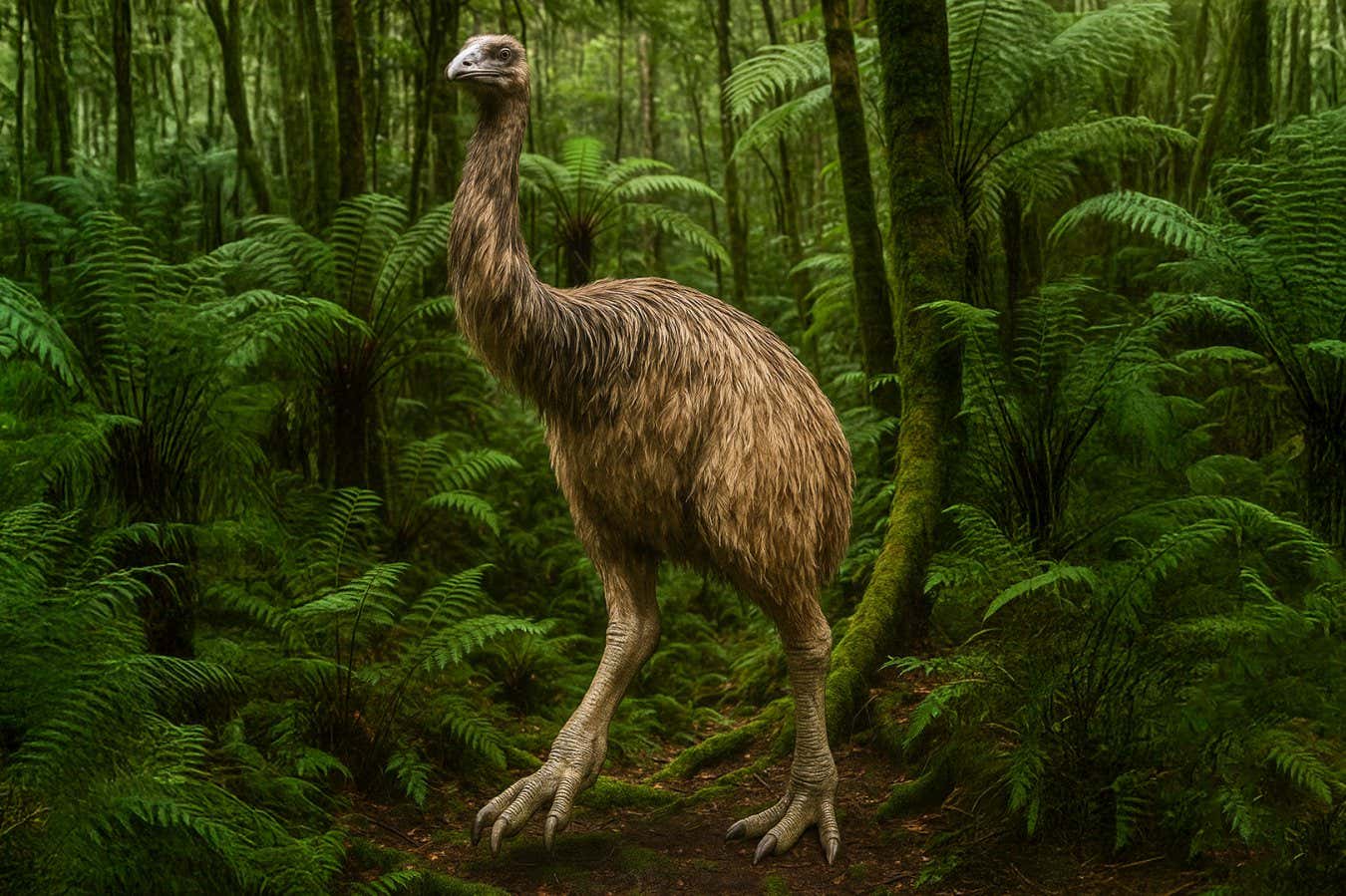After a controversial project claiming to have resurrected the dire wolf, Colossal Biosciences has now announced plans to bring back nine species of the extinct moa bird
By James Woodford
9 July 2025
An artist’s impression of the moa, one of the largest extinct birds
Christopher Klee/Colossal Biosciences
Colossal Biosciences has announced plans to “de-extinct” the New Zealand moa, one of the world’s largest and most iconic extinct birds, but critics say the company’s goals remain scientifically impossible.
The moa was the only known completely wingless bird, lacking even the vestigial wings of birds like emus. There were once nine species of moa in New Zealand, ranging from the turkey-sized bush moa to the two biggest species, the South Island giant moa and North Island giant moa , which both reached heights of 3.6 metres and weights of 230 kilograms.
It is thought that all moa species were hunted to extinction by the mid-15th century, following the arrival of Polynesian people, now known as Māori, to New Zealand sometime around 1300.
Read more
No, the dire wolf has not been brought back from extinction
Colossal has announced that it will work with the Indigenous Ngāi Tahu Research Centre, based at the University of Canterbury in New Zealand, along with film-maker Peter Jackson and Canterbury Museum, which holds the largest collection of moa remains in the world. These remains will play a key role in the project, as Colossal aims to extract DNA to sequence and rebuild the genomes for all nine moa species.
As with Colossal’s other “de-extinction” projects, the work will involve modifying the genomes of animals still living today. Andrew Pask at the University of Melbourne, Australia, who is a scientific adviser to Colossal, says that although the moa’s closest living relatives are the tinamou species from Central and South America, they are comparatively small.
